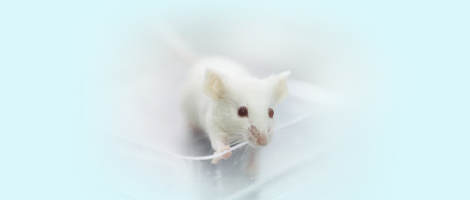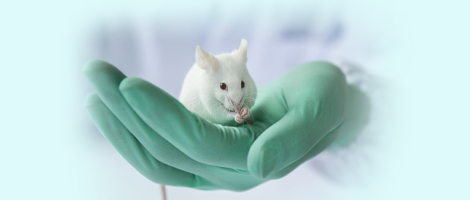| [1] |
TANG X Y, WU S S, WANG D, et al. Human organoids in basic research and clinical applications[J]. Signal Transduct Target Ther, 2022, 7(1):168. DOI:10.1038/s41392-022-01024-9 .
|
| [2] |
JEYA VANDANA J, MANRIQUE C, LACKO L A, et al. Human pluripotent-stem-cell-derived organoids for drug discovery and evaluation[J]. Cell Stem Cell, 2023, 30(5):571-591. DOI:10.1016/j.stem.2023.04.011 .
|
| [3] |
YANG H, CHENG J H, ZHUANG H, et al. Pharmacogenomic profiling of intra-tumor heterogeneity using a large organoid biobank of liver cancer[J]. Cancer Cell, 2024, 42(4):535-551.e8. DOI:10.1016/j.ccell.2024.03.004 .
|
| [4] |
GAO S T, SHEN J, HORNICEK F, et al. Three-dimensional (3D) culture in sarcoma research and the clinical significance[J]. Biofabrication, 2017, 9(3):032003. DOI:10.1088/1758-5090/aa7fdb .
|
| [5] |
SATO T, VRIES R G, SNIPPERT H J, et al. Single Lgr5 stem cells build crypt-villus structures in vitro without a mesenchymal niche[J]. Nature, 2009, 459(7244):262-265. DOI:10.1038/nature07935 .
|
| [6] |
EICHMÜLLER O L, KNOBLICH J A. Human cerebral organoids - a new tool for clinical neurology research[J]. Nat Rev Neurol, 2022, 18(11):661-680. DOI:10.1038/s41582-022-00723-9 .
|
| [7] |
WANG S Y, WANG X, TAN Z L, et al. Human ESC-derived expandable hepatic organoids enable therapeutic liver repopulation and pathophysiological modeling of alcoholic liver injury[J]. Cell Res, 2019, 29(12):1009-1026. DOI:10.1038/s41422-019-0242-8 .
|
| [8] |
LIM K, DONOVAN A P A, TANG W, et al. Organoid modeling of human fetal lung alveolar development reveals mechanisms of cell fate patterning and neonatal respiratory disease[J]. Cell Stem Cell, 2023, 30(1):20-37.e9. DOI:10.1016/j.stem.2022.11.013 .
|
| [9] |
NISHINAKAMURA R. Advances and challenges toward developing kidney organoids for clinical applications[J]. Cell Stem Cell, 2023, 30(8):1017-1027. DOI:10.1016/j.stem.2023. 07.011 .
|
| [10] |
CLEVERS H. Modeling development and disease with organoids[J]. Cell, 2016, 165(7):1586-1597. DOI:10.1016/j.cell.2016.05.082 .
|
| [11] |
EDMONDSON R, BROGLIE J J, ADCOCK A F, et al. Three-dimensional cell culture systems and their applications in drug discovery and cell-based biosensors[J]. Assay Drug Dev Technol, 2014, 12(4):207-218. DOI:10.1089/adt.2014.573 .
|
| [12] |
HOFER M, LUTOLF M P. Engineering organoids[J]. Nat Rev Mater, 2021, 6(5):402-420. DOI:10.1038/s41578-021-00279-y .
|
| [13] |
KIM J, KOO B K, KNOBLICH J A. Human organoids: model systems for human biology and medicine[J]. Nat Rev Mol Cell Biol, 2020, 21(10):571-584. DOI:10.1038/s41580-020-0259-3 .
|
| [14] |
ANDREWS M G, KRIEGSTEIN A R. Challenges of organoid research[J]. Annu Rev Neurosci, 2022, 45:23-39. DOI:10.1146/annurev-neuro-111020-090812 .
|
| [15] |
BREDENOORD A L, CLEVERS H, KNOBLICH J A. Human tissues in a dish: the research and ethical implications of organoid technology[J]. Science, 2017, 355(6322): eaaf9414. DOI:10.1126/science.aaf9414 .
|
| [16] |
ZHOU Z Z, PANG Y, JI J Y, et al. Harnessing 3D in vitro systems to model immune responses to solid tumours: a step towards improving and creating personalized immunotherapies[J]. Nat Rev Immunol, 2024, 24(1):18-32. DOI:10.1038/s41577-023-00896-4 .
|
| [17] |
NEAL J T, LI X N, ZHU J J, et al. Organoid modeling of the tumor immune microenvironment[J]. Cell, 2018, 175(7):1972-1988.e16. DOI:10.1016/j.cell.2018.11.021 .
|
| [18] |
PUSCHHOF J, PLEGUEZUELOS-MANZANO C, MARTINEZ-SILGADO A, et al. Intestinal organoid cocultures with microbes[J]. Nat Protoc, 2021, 16(10):4633-4649. DOI:10.1038/s41596-021-00589-z .
|
| [19] |
ZHANG J, TAVAKOLI H, MA L, et al. Immunotherapy discovery on tumor organoid-on-a-chip platforms that recapitulate the tumor microenvironment[J]. Adv Drug Deliv Rev, 2022, 187:114365. DOI:10.1016/j.addr.2022.114365 .
|
| [20] |
GABBIN B, MERAVIGLIA V, ANGENENT M L, et al. Heart and kidney organoids maintain organ-specific function in a microfluidic system[J]. Mater Today Bio, 2023, 23:100818. DOI:10.1016/j.mtbio.2023.100818 .
|
| [21] |
TUVESON D, CLEVERS H. Cancer modeling meets human organoid technology[J]. Science, 2019, 364(6444):952-955. DOI:10.1126/science.aaw6985 .
|
| [22] |
ATANASOVA V S, DE JESUS CARDONA C, HEJRET V, et al. Mimicking tumor cell heterogeneity of colorectal cancer in a patient-derived organoid-fibroblast model[J]. Cell Mol Gastroenterol Hepatol, 2023, 15(6):1391-1419. DOI:10.1016/j.jcmgh.2023.02.014 .
|
| [23] |
JIANG S W, DENG T W, CHENG H, et al. Macrophage-organoid co-culture model for identifying treatment strategies against macrophage-related gemcitabine resistance[J]. J Exp Clin Cancer Res, 2023, 42(1):199. DOI:10.1186/s13046-023-02756-4 .
|
| [24] |
SCHUTH S, LE BLANC S, KRIEGER T G, et al. Patient-specific modeling of stroma-mediated chemoresistance of pancreatic cancer using a three-dimensional organoid-fibroblast co-culture system[J]. J Exp Clin Cancer Res, 2022, 41(1):312. DOI:10.1186/s13046-022-02519-7 .
|
| [25] |
KIM M B, HWANGBO S, JANG S, et al. Bioengineered co-culture of organoids to recapitulate host-microbe interactions[J]. Mater Today Bio, 2022, 16:100345. DOI:10.1016/j.mtbio.2022.100345 .
|
| [26] |
WILSON S S, TOCCHI A, HOLLY M K, et al. A small intestinal organoid model of non-invasive enteric pathogen-epithelial cell interactions[J]. Mucosal Immunol, 2015, 8(2):352-361. DOI:10.1038/mi.2014.72 .
|
| [27] |
HAN Y L, DUAN X H, YANG L L, et al. Identification of SARS-CoV-2 inhibitors using lung and colonic organoids[J]. Nature, 2021, 589(7841):270-275. DOI:10.1038/s41586-020-2901-9 .
|
| [28] |
LI M H, GAO L X, ZHAO L, et al. Toward the next generation of vascularized human neural organoids[J]. Med Res Rev, 2023, 43(1):31-54. DOI:10.1002/med.21922 .
|
| [29] |
HUANG S C, ZHANG Z, CAO J W, et al. Chimeric cerebral organoids reveal the essentials of neuronal and astrocytic APOE4 for Alzheimer's tau pathology[J]. Signal Transduct Target Ther, 2022, 7(1):176. DOI:10.1038/s41392-022-01006-x .
|
| [30] |
MORRONE PARFITT G, COCCIA E, GOLDMAN C, et al. Disruption of lysosomal proteolysis in astrocytes facilitates midbrain organoid proteostasis failure in an early-onset Parkinson's disease model[J]. Nat Commun, 2024, 15(1):447. DOI:10.1038/s41467-024-44732-2 .
|
| [31] |
YANG R X, YU Y Y. Patient-derived organoids in translational oncology and drug screening[J]. Cancer Lett, 2023, 562:216180. DOI:10.1016/j.canlet.2023.216180 .
|
| [32] |
NAKAZAWA Y, MIYANO M, TSUKAMOTO S, et al. Delivery of a BET protein degrader via a CEACAM6-targeted antibody-drug conjugate inhibits tumour growth in pancreatic cancer models[J]. Nat Commun, 2024, 15(1):2192. DOI:10.1038/s41467-024-46167-1 .
|
| [33] |
YU L, LI Z C, MEI H B, et al. Patient-derived organoids of bladder cancer recapitulate antigen expression profiles and serve as a personal evaluation model for CAR-T cells in vitro [J]. Clin Transl Immunology, 2021, 10(2): e1248. DOI:10.1002/cti2.1248 .
|
| [34] |
MU P Y, ZHOU S J, LV T, et al. Newly developed 3D in vitro models to study tumor-immune interaction[J]. J Exp Clin Cancer Res, 2023, 42(1):81. DOI:10.1186/s13046-023-02653-w .
|
| [35] |
SONG T Y, KONG B, LIU R, et al. Bioengineering approaches for the pancreatic tumor organoids research and application[J]. Adv Healthc Mater, 2024, 13(1):2300984. DOI:10.1002/adhm.202300984 .
|
| [36] |
HARTUNG T. Thoughts on limitations of animal models[J]. Parkinsonism Relat Disord, 2008, 14(): S81-S83. DOI:10.1016/j.parkreldis.2008.04.003 .
|
| [37] |
DONCHEVA N T, PALASCA O, YARANI R, et al. Human pathways in animal models: possibilities and limitations[J]. Nucleic Acids Res, 2021, 49(4):1859-1871. DOI:10.1093/nar/gkab012 .
|
| [38] |
CORSINI N S, KNOBLICH J A. Human organoids: New strategies and methods for analyzing human development and disease[J]. Cell, 2022, 185(15):2756-2769. DOI:10.1016/j.cell.2022.06.051 .
|
| [39] |
GRIBBEN C, GALANAKIS V, CALDERWOOD A, et al. Acquisition of epithelial plasticity in human chronic liver disease[J]. Nature, 2024, 630(8015):166-173. DOI:10.1038/s41586-024-07465-2 .
|
| [40] |
VITALE S, CALAPÀ F, COLONNA F, et al. Advancements in 3D in vitro models for colorectal cancer[J]. Adv Sci, 2024, 11(32): e2405084. DOI:10.1002/advs.202405084 .
|







 ), 马一凡1, 刘可1, 张延英1(
), 马一凡1, 刘可1, 张延英1( )(
)( ), 师长宏2(
), 师长宏2( )(
)( )
)
 ), MA Yifan1, LIU Ke1, ZHANG Yanying1(
), MA Yifan1, LIU Ke1, ZHANG Yanying1( )(
)( ), SHI Changhong2(
), SHI Changhong2( )(
)( )
)